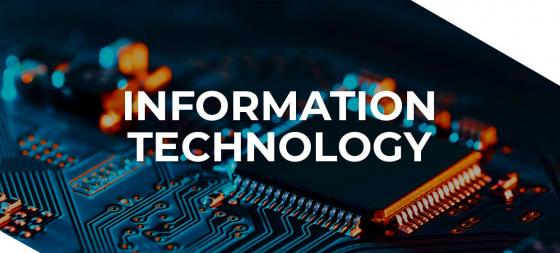The Current and Future Roles of the IT Department

Images may be subject to copyright.
Information Technology (IT) involves the study, design, development, implementation, and the support or management of computer-based information systems, particularly software applications and computer hardware, for the purpose of converting, storing, protecting, processing, transmitting, and securely retrieving information. Information Technology (IT) has many core components which often dictate how IT departments are structured.
Some of these components include hardware, software, networking & communications infrastructure, business intelligence (BI) & reporting, support, leadership, planning, security, governance, etc... The term information technology has mushroomed to encompass many aspects of computing, communications, and technology; so much so that we now use ICT (Information and Communications Technology) more frequently than IT.
Armed with the definition of IT, it is important to know the role the IT department plays in every organization. To know an IT department’s role, you need to first understand the mission, goals, and objectives of the organization. An understanding of these three aspects of your IT organization paves the way to gaining important insight into the role that it plays within that specific organization.
Now, from my understanding, the general role of the Information Technology (IT) department is to provide technology and communications-related services and support in order to enable the organization to achieve its goals and objectives. Contrary to arguments made by some who try to make the IT department appear as only risk or cost minimizer, the IT department basically serves as an ENABLER within the organization. The IT department handles three major components within the organization as it relates to IT: governance, infrastructure, and functionality.
With regard to governance, the IT department provides the operating parameters for the use of IT systems, services, architecture, network, security, etc., within the organization. The IT department’s infrastructural responsibility is to ensure that the operating network and circuitry, in addition to other equipment that constitute the IT system, work in conformity with the established operating standards and procedures. System functionality is also a responsibility of the IT department.
That is, the IT department is to provide the capacity for operating applications development, storing and securing the electronic information the organization owns and providing direct operating assistance in software use and data management to all functional areas in the organization.
That being said, the role of an IT department may vary depending on the type, goals, and objective of the organization. For example, the role of an IT department in a school or school district may be to support the educational technology needs of the school or schools, its students, faculty, and staff. In a business, the IT Department aligns IT with the business strategy to achieve the overall goals and objectives of the business. The IT department helps create value by addressing the business needs of an organization. This can vary depending on how the firm uses IT. The same applies to government IT departments as well.
So basically, the IT department does the following and more as needed: design, develop, and implement data processing; provide ICT hardware and maintenance support services; implement security policies to safeguard the security of organizations hardware and its data; design, develop, manage, and maintain the organization’s website; provide IT Software Support services to the organization; take responsibility for the electronic storing and archiving of data; facilitate the storing and archiving of documentation of the organization; provide technical support for the use of ICT in the form of training and so on.
The IT Department of Tomorrow
Today, most IT departments still have a full staff, a server room full of blade servers running to support mission-critical software and systems, websites, portals, etc…, that organizations currently leverage to meet their business goals. In a few years, this will go away. With virtualization, converged infrastructures, and cloud computing, the traditional IT department model will soon be obsolete. These new technologies that have emerged are reshaping the data center landscape. The result of this will be a shrunk, or merged, and/or ultimately, a fizzled-out IT department. And if it still exists, the role and structure of the future IT department will shift significantly.
IT departments will not be siloed to special verticals as they are now. The point I am trying to make is that we will not see IT departments in which there’s a network team that handles all aspects of the networks or a server team that handles all aspects of server rooms. Rather, we will see a data center manager emerge with a converged role. This person will not spend time on server installations or network upgrades, but on choosing the right applications to deploy and putting the right plans in place to help the organization streamline business processes.
In Liberia, we will still maintain the current oversized, centralized IT departments for the next five to ten years. This is because our national IT initiatives are still at the infant stages. We will still need folks to implement IT Systems, install networks, email servers, websites, directory services, etc
But as new technologies continue to emerge, most of the systems we use will continue to run themselves and will not require IT professionals to keep them running. This will make IT departments, as we currently know them, a relic. The reality of the future of IT departments is that organizations are going to keep a smaller IT team or group on staff, hire more consultants, and focus their IT resources on software, the cloud, and mobile devices. Mobile devices will eventually become our fully functioning PCs. This transition may not happen overnight, but it has long since begun.
Until next week,
Carpe diem!!

